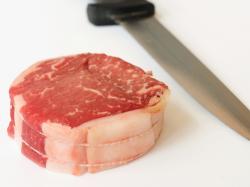Irish Beef: Delicious, Disease-Free Import Steaks
June 29, 2015 | 2 min to read

There’s a new type of beef on the menu at Tir Na Nóg, an Irish pub in New York. The sirloins, fillets, and other prime cuts come from grass-fed cows that live outdoors. They get plenty of exercise, which makes the meat leaner. It has a stronger, almost gamey flavor. Sometimes it tastes as if it’s been grilled over charcoal, even when cooked in a regular oven. At Tir Na Nóg, a rib-eye runs about $25—a little cheaper than the same cut of grass-fed U.S. beef. That’s because the meat is from Ireland. It’s the first time Irish steak has been sold in the U.S. in almost two decades. It used to be illegal. Remember mad cow disease?
Earlier this year, the U.S. Department of Agriculture lifted the ban it placed on European beef in the wake of the 1996 outbreak of mad cow, which led to the infection of more than 200 people globally, the destruction of more than 4.5 million cattle, and countless steaks fearfully cooked well-done.
Now Ireland is trying to brand its beef as the next trendy meat, like Japanese Wagyu or dry-aged Texas tomahawk before it. The country has been lobbying the U.S. government for years to let it sell in the States, which is the largest consumer of beef in the world, with a per capita diet twice that of Europe. Meanwhile, Ireland has 1.4 cows for every person. The only thing that’s stood in the way is mad cow, though “people have mostly forgotten about it,” says Karen Coyle, the North American envoy for the Irish Food Board, a government agency that promotes the country’s food and beverages. “When we talked to Americans, the problem never came up.”
To read the rest of the story, please go to: Bloomberg Businessweek
